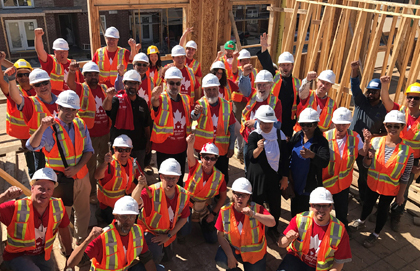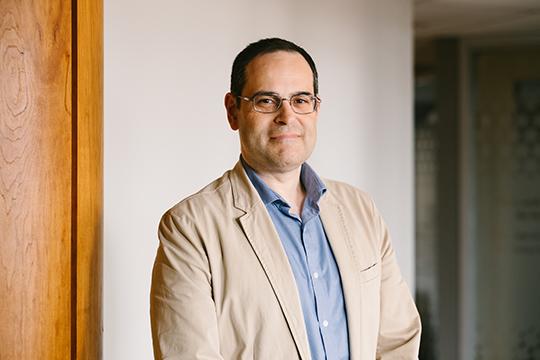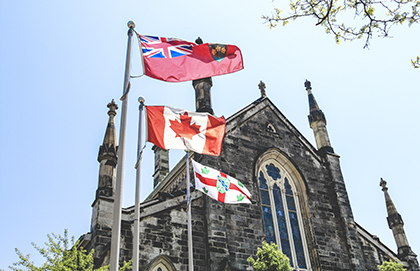The sound of religious worship is as varied as the number of faith traditions around the world. A mournful chant, an ancient hymn, a barely audible mantra, and even the wail of an electric guitar will pierce the air in various houses of worship. But on a sunny Wednesday morning, the typical sounds of worship gave way to the whine of circular saws, rumbling forklifts, and hammers hitting nails. The audio landscape changed as more than two dozen leaders of faith communities and faith-based organizations responded to the call from Faith in Canada 150 to spend the day volunteering at a Habitat for Humanity Greater Toronto Area (GTA) construction site.
“We believe that faith is what’s happening today – that faith is lived through action,” Ene Underwood, CEO of Habitat for Humanity GTA, told the multi-faith assembly at the faith leaders’ build.
Her words came over lunch – halal, kosher, and vegetarian – while distinct faith communities mixed and mingled as they broke bread, taking a break from their construction.
“Just remember, Jesus was a carpenter,” Rabbi Baruch Frydman-Kohl remarked with a smile at one point in the morning as he picked up tools with Christians, Muslims, and representatives of other faiths. It wasn’t long before he, Bishop Vincent Nguyen, and Imam Hamid Slimi were grabbing a plank of plywood together and nailing it down as part of a second storey floor. Differing backgrounds and beliefs did not get in the way of a common act of worship and a common expression of faith by contributing to the construction of 50 homes for low-income families.
The significance of the day’s work wasn’t lost on Ray Pennings, co-founder and executive vice president of Cardus, the think tank behind Faith in Canada 150.
“The secular narrative, by and large, is that faith is what happens in churches, mosques, synagogues, or what happens in people’s private homes,” said Pennings. “The narrative that we want to counter with is … a lived faith has implications for society and for the public good. We want to give tangible expression to that. Faith communities don’t just serve their own members and those who walk in the doors. Faith actually produces a public good.”
In this case, the public good would be safe, decent, affordable homes at 140 Pinery Trail. But the actions of faith leaders also made real what in Habitat for Humanity parlance is known as the “theology of the hammer.”






